We first heard about it nearly twenty years ago when we were in South Africa. Andrew and Wendy had taken upon themselves the task of ensuring that the Indian visitors did not leave South Africa without seeing something of their country. They planned weekend trips and ferried us around to several places both within and outside Pretoria that we would have never visited but for them. Always ready with more ideas, Wendy urged us to visit Etosha National Park (in Namibia) and Okavango Delta (in Botswana) during our stay in SA. While we did not manage to get there then, these places have always been on our minds.
This long held memory essentially tilted the balance towards turning west from Bulawayo to Botswana and Namibia rather than continue on Zimbabwe, Malawi, Mozambique route we had been contemplating for some time. Malawi started inching up the 'desirable destination' list after we had heard about the charms of Lake Malawi from several travelers we had met earlier on this trip. But the pull of the Okavango proved stronger.
The Okavango Delta, the world's largest inland delta, is the spectacular result of the Okavango River flowing into the Kalahari Desert. We've always been fascinated by this delta where the river simply vanishes into the desert air and sands. No ocean or lake destination for this river as is the case with other rivers. Swollen with floodwaters from the summer rains, the river travels from the Angolan highlands, past the Namibian Caprivi strip and crosses into Botswana. The river pushes through from the north of the country and eventually encounters a landscape that is completely flat. With less than 2 meters variation in height, the water spreads like an open palm creating a stunning mosaic of channels, lagoons, ox-bow lakes, flooded grasslands and thousands of islands of a variety of shapes and sizes.
As the water flows through these myriad waterways, much of it, almost 95%, either evaporates or gets swallowed by the Kalahari sands. Only 2 to 3 percent of the water reaches the delta’s southern fringes. Being located in an extremely arid desert region, it attracts great concentrations of animals and birds, making it a complex (and unique) ecosystem as well as Botswana's premier tourist attraction.
But the size and scope of the region makes it somewhat of a challenge for a (budget conscious) independent traveler to plan a visit. Moremi Game Reserve (the only part of the delta that is protected) and the inner delta are difficult to get to and most accessible by charter flights. Besides the few exclusive lodges that operate in this area have truly jaw-dropping prices. The part of the delta closer to the eastern fringe is far more accessible and trips are cheaper and easier to arrange from Maun.
We signed up for a 2 day trip by mokoro, a traditional dugout canoe. This included a night of camping in the bush and we were eager to witness a sunset in the delta. We were joined by a couple of other travelers, a young woman from South Korea and a young man from Brooklyn, New York.
We were first transported on a motorized boat up the Thamalakane River to Buffalo Fence, so called because the fence separates cattle districts of Botswana from the wilderness of the Okavango delta and runs through here. It was built to keep buffalo and other wild animals separate from domestic stock.
There we were met by members of the Okavango Kapano Mokoro Community Trust, an organization of local community fishermen that provides guides and polers to take people into the delta. It is an alternative source of employment for these people and helps keep them committed to taking care of the environment. We transferred into the mokoros and settled down to be transported deeper into the delta.
The mokoro is paddled using only a pole and is the quietest and most eco-friendly way of traveling. With years of experience the poler expertly navigated through the network of water channels, deciding on which paths to take depending on the water level at the time. The meandering waterways are fringed with papyrus reeds, sometimes so thick that the front of the mokoro would part the reeds just inches from your face (more so if you are sitting in the front).
Gliding through the watery expanse past large swathes covered with stunning water-lilies and enjoying it in complete silence was a delightful way to experience the region. We passed through several palm-fringed islands and thick woodland with lush vegetation. We stopped to admire well-camouflaged frogs that live on the reeds and look at the birds that were perched on trees along the way. We saw many of the usual suspects - cormorants, kingfishers, plovers and the red bishop. After poling upstream for 90 minutes, we arrived at an island deemed suitable for setting up camp and the tents were put up.
Video of mokoro gliding on the water
After a delicious meal that was prepared on an open fire, we were given the opportunity to try our hands steering a mokoro. Our guide gave us brief verbal instructions on the basics and and handed over the pole giving us a change to earn our Okavango Mokoro License, a piece papyrus reed. We are happy to report that both M and V passed the test on our first attempt and are now qualified mokoro operators.
We were immediately rewarded with a thunderstorm that lit the delta and showered it with heavy rain. We enjoyed this spectacle till it got too heavy forcing us to rush into our tents for shelter.
Early evening we set out on foot for a walking safari into the island. We trudged through the tall grass and plodded through huge elephant dung mounds, following some existing trails and making some new ones as the old ones were flooded. Distant trees and large termite mounds were often the only landmarks. Acacias, African mangosteens, Raintrees and the Mopane tree with leaves that look like butterfly wings were the dominant species around. We stopped to examine bleached jaw-bones and skulls of zebras and other animals. The highlight of wildlife viewing was a herd of zebras that we spotted from a distance and then walked towards. Dark clouds threatening a downpour again gathered on the horizon prompting our return and we were back at camp in time to enjoy the pink sunset glow on the delta.
Early next morning we went on our second walking safari to a different island and encountered more insects, birds, antelopes. Our efforts to get to the far end of that island was thwarted by heavily flooded trails that would have required us to wade waist deep in water. On our way back, the guide kept us entertained by telling us stories of various encounters with lions that have taken place here. The afternoon was free for us to enjoy the surroundings of the camp and the sumptuous meals that were provided. Later in the evening we were back on the mokoros for the trip back to Maun.
Google Maps Link


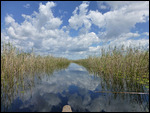

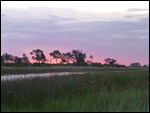


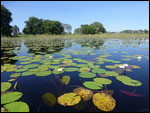
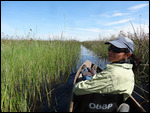
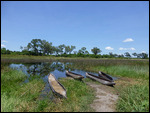

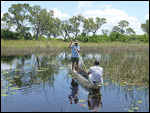


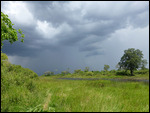
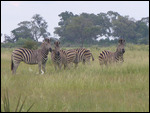
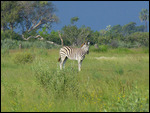

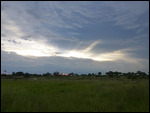
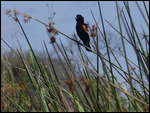
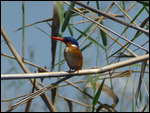
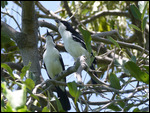
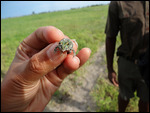
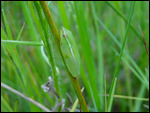
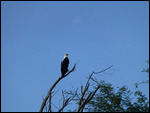
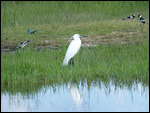

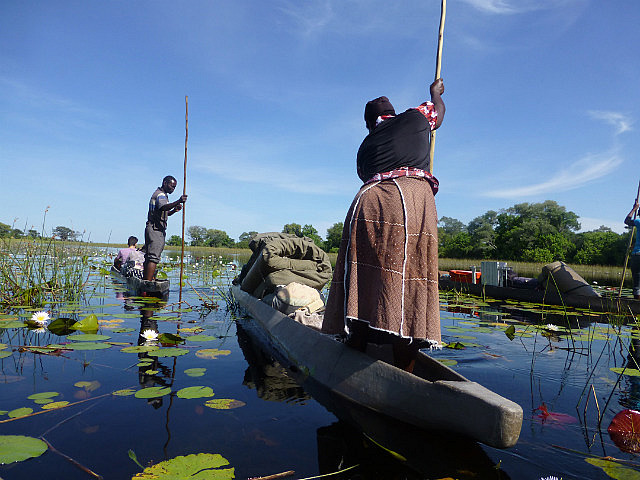
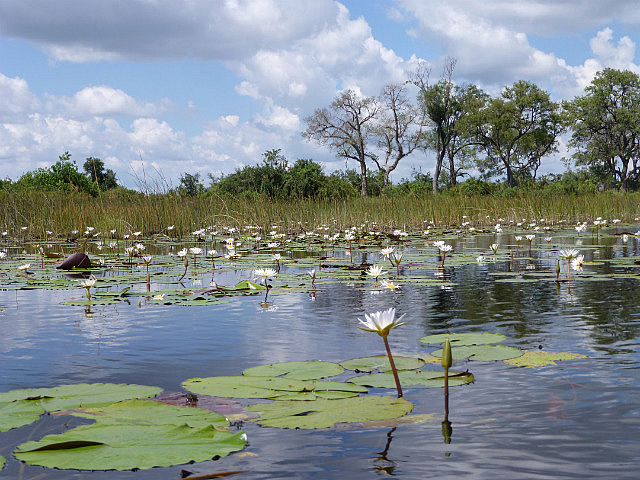
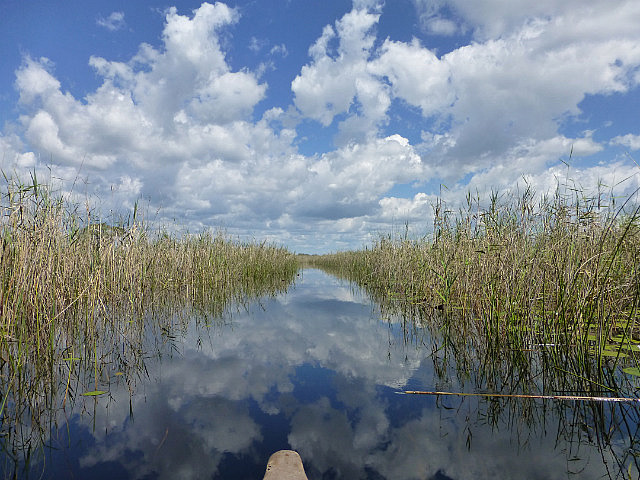
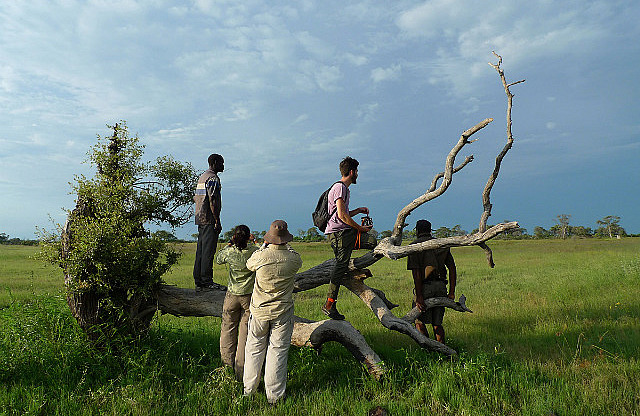
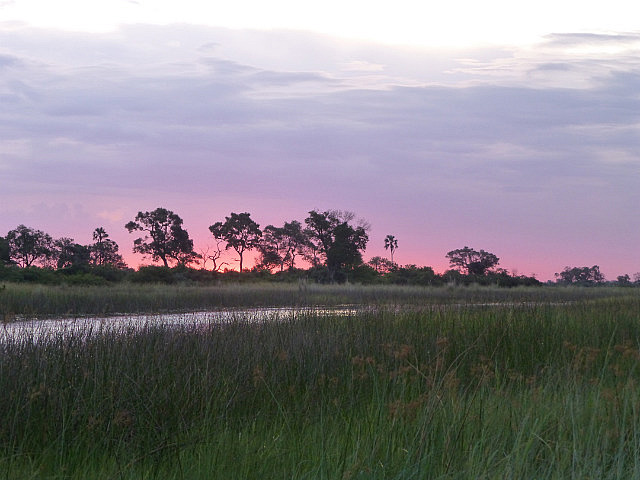
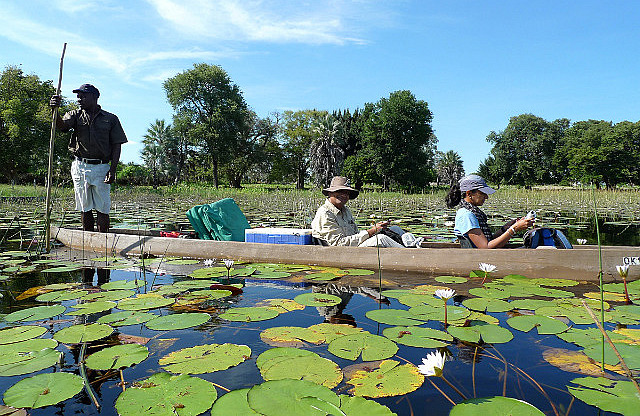
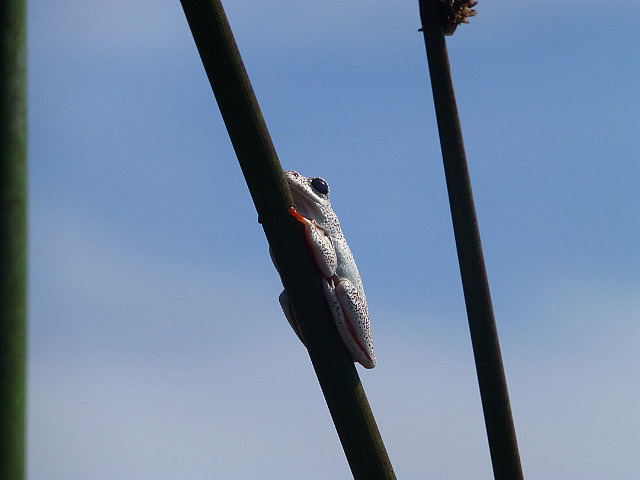
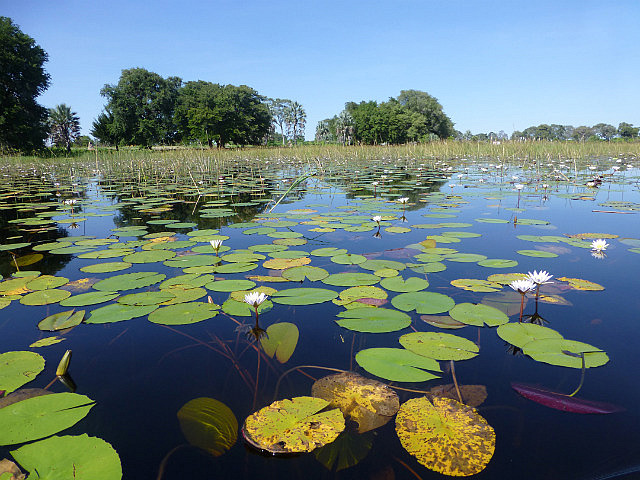
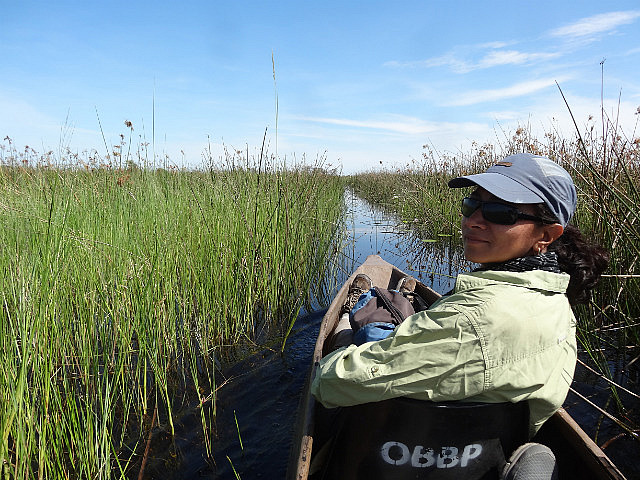
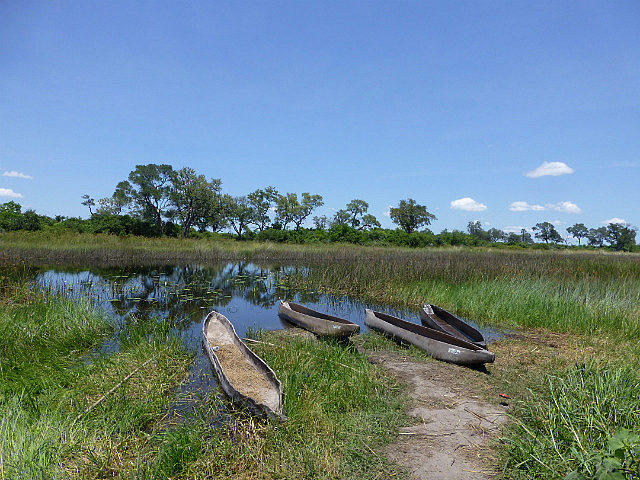
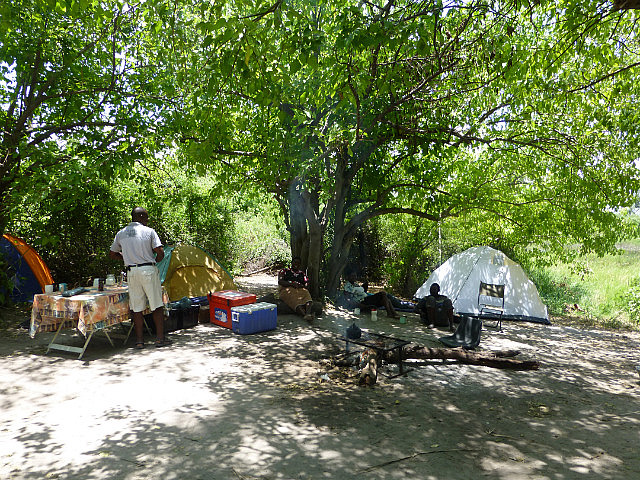
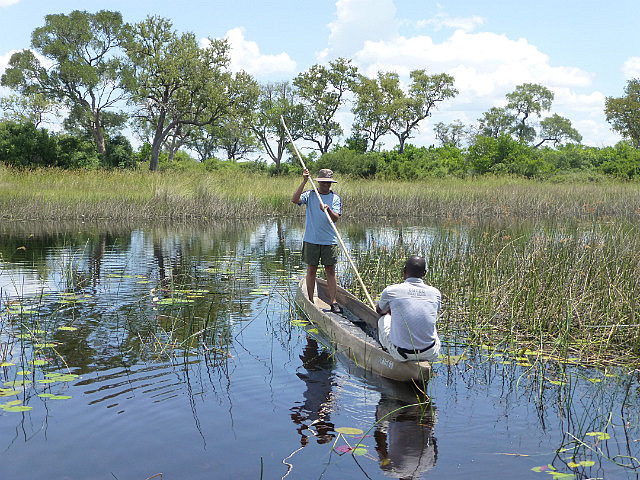
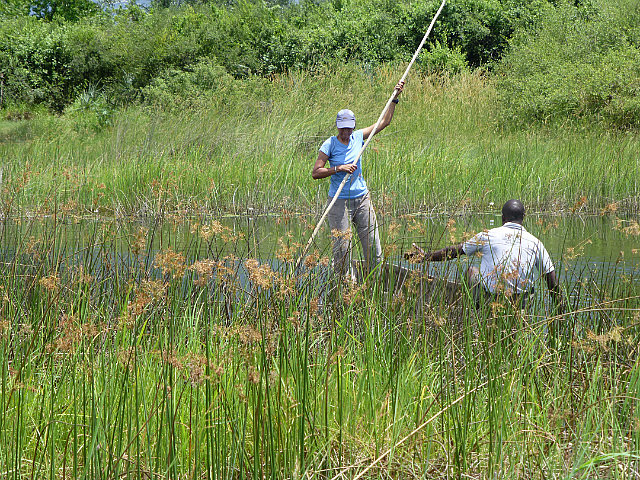
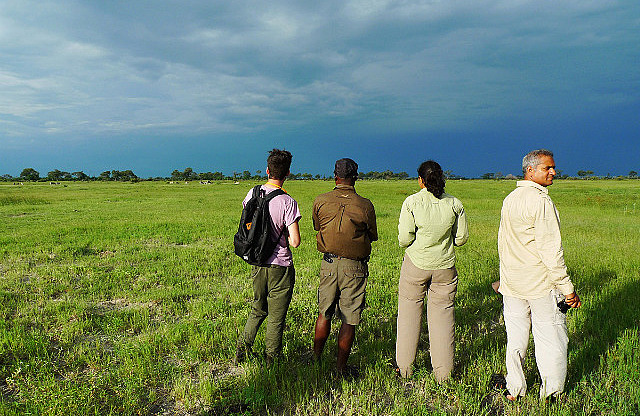

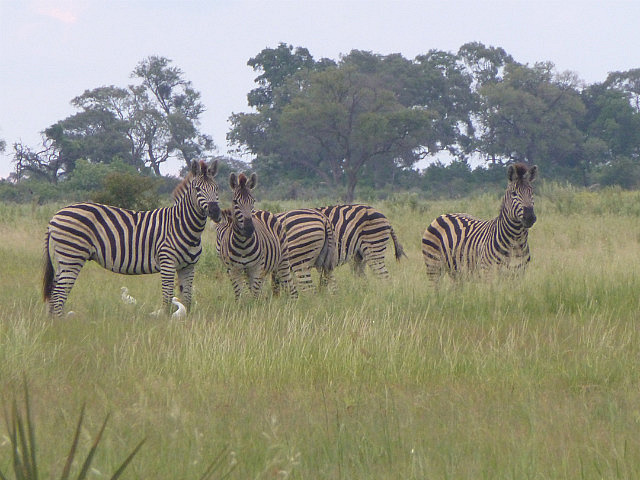
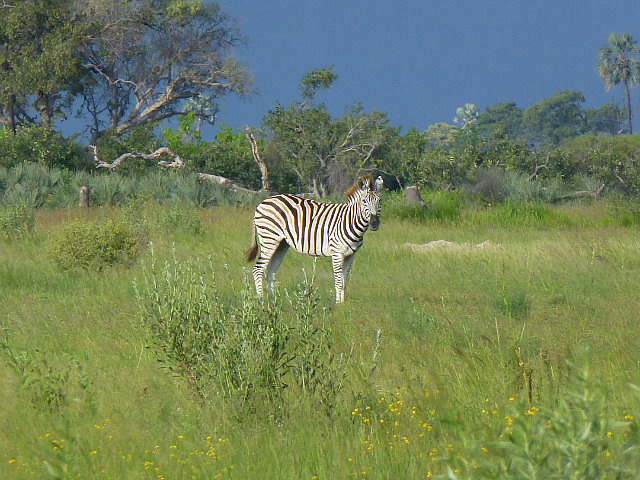
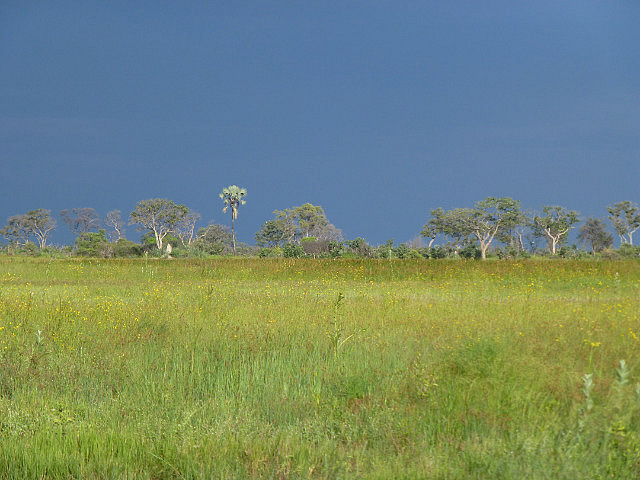


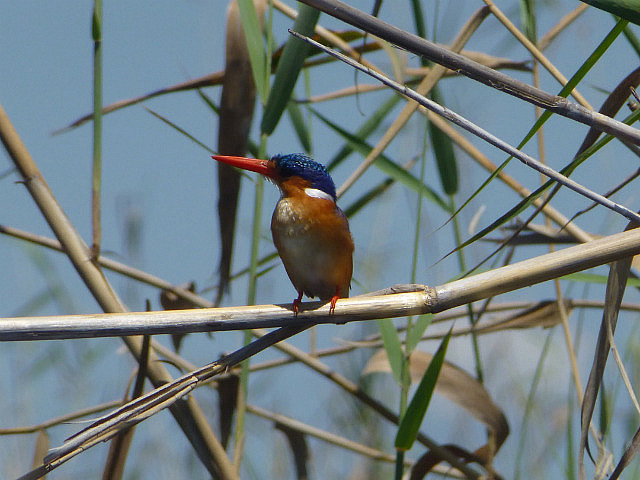


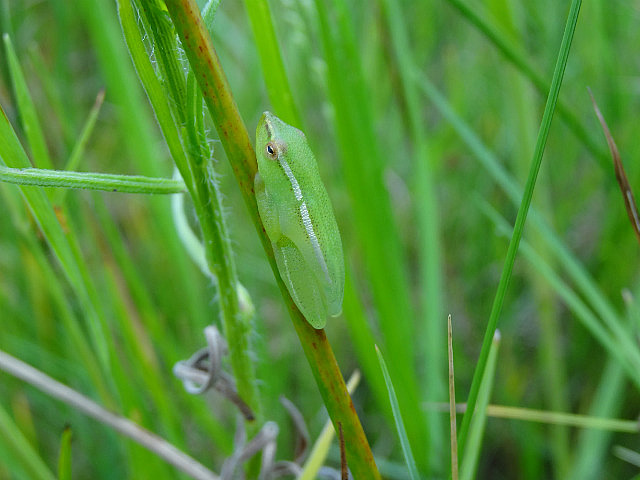
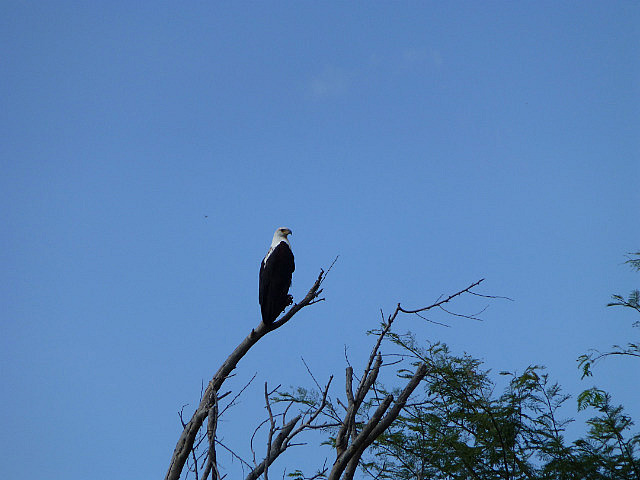
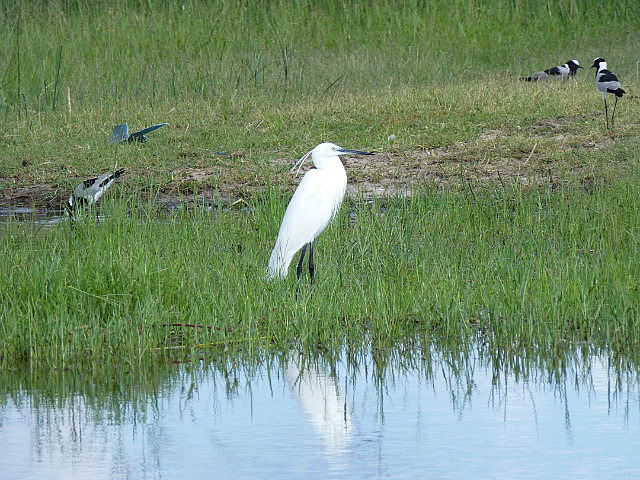

Comments